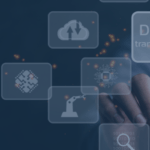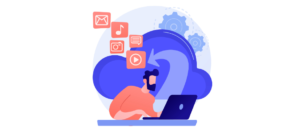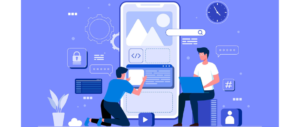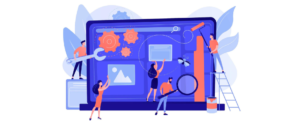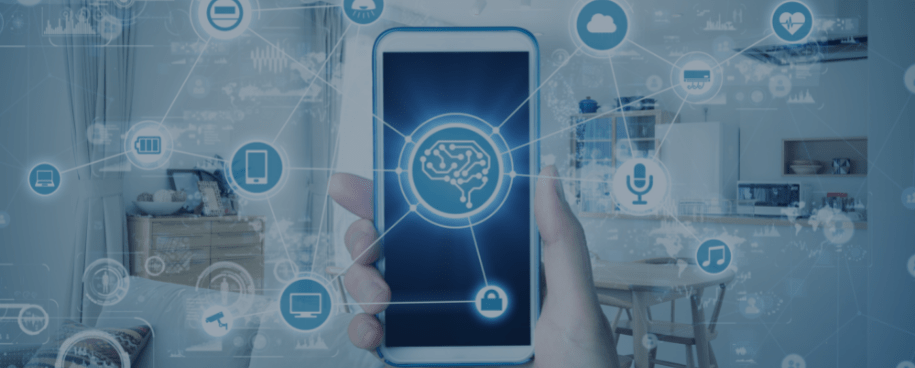
Remember the days when teaching used to involve just blackboards? Or a healthcare professional monitoring a patient’s condition manually? All of these scenarios were a reality until IoT came along.
IoT devices have become a crucial part of our day-to-day personal as well as professional lives – from HVAC tools such as AC and fans in our houses to biometric scanners at work. The IoT market reached a value of 150 billion USD in 2018 and will surpass a whopping 1.5 trillion USD by 2025, according to a recent report. The flexibility and mobility of this technology have enabled it to scale across various industries in a very short time.
IoT mobile applications are the sweet spot where the physical world meets the virtual world. The most common examples today include fitness trackers and smartwatches. The easy-to-update, feature-rich applications provide a personalized experience and a user-friendly interface to get comprehensive insights from the collected data.
The benefits of IoT mobile applications are many, and businesses can reap its benefits to stay relevant in the competition and seize opportunities for innovation. Here are the top benefits of integrating IoT with mobile applications in the new normal that businesses can capitalize on:
Enables Data Collection and Analysis
Integrating IoT devices such as sensors and servers with mobile applications enables collective access and collection of data at the gateway, which gets stored in the cloud. The IoT user data and analysis can help improve the user experience by knowing the customer demands in real-time.
For instance, the use of IoT devices in healthcare such as heart rate monitors, glucose monitors, and fitness trackers collect the patient data, analyze it, and notify the users or caregiving facilities about the patient’s patterns or abnormalities. Healthcare organizations are making the most of IoT for enhancing their patient care and facilitating remote patient care with smart devices and mobile applications.
Suggested Read: IoMT – Internet of Medical Things: All you need to know (Part 2)
Enhances Customer Experience
The goal of any business strategy is to provide a better customer experience. Integrating IoT with mobile applications can transform the customer experience by analyzing customer data and demands.
An excellent example of providing customers with a great customer experience is Walt Disney World. At Disney World, users can opt for a “Magic Band” connected to a mobile application. These bands enabled navigating the vast theme park, scheduling time for the FastPass tickets for rides – just tap your band on the touchpoint to skip the queue for the ride – and also unlock your room at the hotel property.
Enables Remote and Hybrid Working
A mobile application-controlled IoT infrastructure can streamline work processes and enable seamless collaboration across teams located across different geographies. The latter feature of this technology gained prominence in the new normal, with remote working becoming mainstream.
For instance, IoT-enabled conferencing equipment has made communication and collaboration between remote teams easier. Interactive whiteboards for in-person and online presentations allow the participants to brainstorm virtually. Moreover, implementing IoT home and lifestyle devices integrated with a mobile application such as light bulbs, AC, and other HVAC tools ensures a productive working environment. Hybrid working is here to stay, and so are the IoT mobile apps! See how IoT is enabling virtual education.
Supports Integration with other Technologies
Technologies such as Machine Learning, Artificial Intelligence, and Natural Language Processing are making notable strides in many industries. Integrating these with IoT and mobile applications is also increasing at a dizzy speed. A blend of these powerful technologies has the potential to open many doors in the near future. Intelligent voice assistants like Alexa and Siri have become household names across the globe. These current players in the IoT voice world are a great example of a powerful blend of the aforementioned technologies.
Generates Revenue and Promotes Expansion in the Market
IoT mobile applications provide real-time data of the business processes and the business information at the touch of a button. This helps businesses make well-informed, data-driven decisions for the organization’s strategic development and long-term growth that ultimately adds to the revenue.
Businesses need to understand that building a custom application with IoT can give them a boost amongst their competitors. It will also help them address a niche customer base that has started using IoT mobile applications. Check out how Vatsa Solutions helped build a mobile application to connect a car’s onboard diagnostics (OBD) device with a backend IoT platform.
Reduces Human Effort and Expenses
IoT initiatives are being implemented across industries to automate repetitive, manual business processes. It reduces human efforts and frees up the employees, enabling them to focus on more human-centric and critical tasks. An IoT mobile application can monitor the progress of automated business processes, predict any delays or interruptions in the processes, and so on.
Additionally, it reduces business expenses in many ways and enhances the efficiencies of the workflows. An IoT helps you gain insights into the customer demands and make insightful decisions that will keep the expenses within the budget.
All in all, the integration of IoT with mobile applications helps businesses get a competitive edge in the market and provides a niche market entry – a must in today’s dynamic business landscape. Furthermore, it has its benefits across departments, from product development to sales and customer service.
To learn more about how you can leverage IoT for your business, write to us at [email protected].

